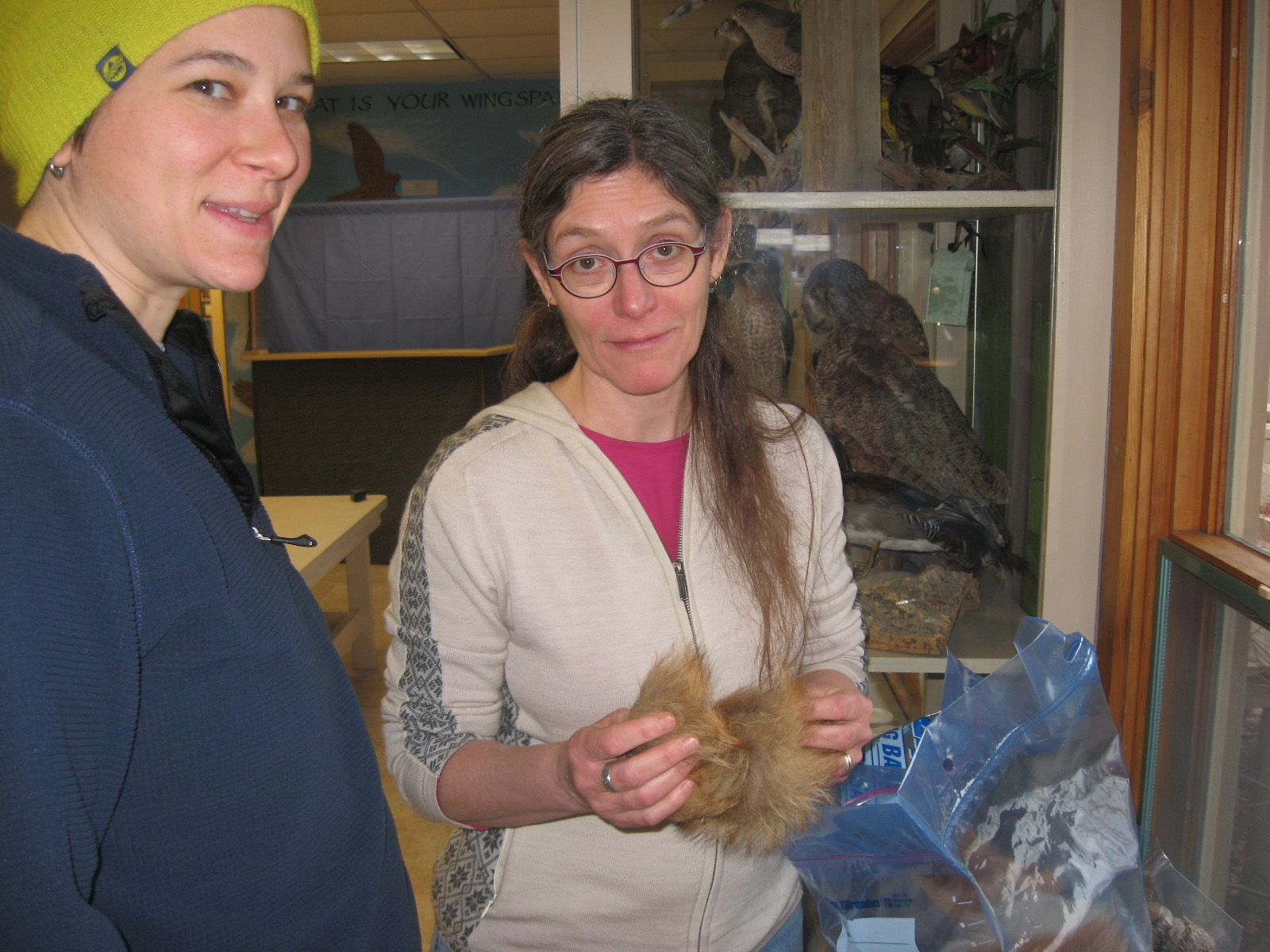
Merry Lea’s Environmental Education Outreach (EEO) team expanded their knowledge of entomology this winter when they discovered that something was eating the taxidermy displays in the exhibit room in the Learning Center.
Merry Lea owns dozens of bird mounts, a few animal mounts and a number of furs. These nature displays are important teaching tools for environmental education and play a role in many Pre-K to 12 programs.
When the EEO team examined their bird mounts, they found places where the structure of feathers was compromised and falling apart. Underneath the feathers, they found larval cases and cases insects had made out of fiber.
Figuring out what to do about this was one of the many “life-long learning experiences” and opportunities for teamwork that Merry Lea provides. EEO members called other nature centers and became acquainted with websites like museumpests.net and connectingtocollections.org. EEO director Marcos Stoltzfus began working on a plan for treatment and ongoing preservation.
With the help of Carol Good-Elliott’s 800-page entomology textbook, the team confirmed that the mounts were suffering from an infestation of dermestid beetles and clothes moths. These species are scavengers that feed on leather, fur, skin, wool, felt, silk and museum specimens.
Jane Litwiller cleaned and sealed the glass cases that hold mounts to prevent re-infestation. She also inspected the Learning Center offices for hidden sources of contamination and confiscated the bald eagle hiding in Jennifer Schrock’s office.
Meanwhile, the Cider Shed became a pest management hospital and everything from the fox fur to the dignified snowy owl received treatments. Katie Stoltzfus recalls spending a morning with a vacuum cleaner and paintbrush, dusting the mounts. They were then frozen and refrozen in order to bring dormant insects out of diapause and kill them. Another strategy involved encasing the mounts in giant Ziplock bags with mothball packets affixed to the top of the bag. The fumes settle downward.
“One thing we concluded along the way was that our purpose is educational, not long term preservation, as it might be for a museum,” Jane commented. The team has no plans to bar children from bringing nature items into the Learning Center that might contain insects. That would interfere with their learning.



